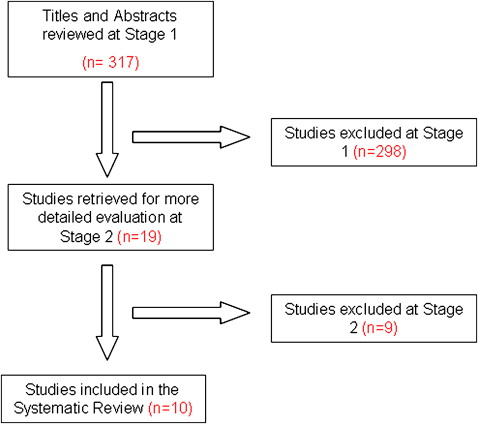Introduction
Our objectives were to (1) systematically review the literature on the effectiveness of fluoride-containing adhesives in controlling decalcification in fixed orthodontic patients, (2) determine which fluoride-containing adhesives provide protection against decalcification, and (3) make recommendations on the usage of fluoride-containing adhesives in patients with fixed orthodontic appliances.
Methods
In this systematic review, we searched published and unpublished material in any language using general and specialist databases; key orthodontic journals were searched by hand. Predefined inclusion criteria based on objective outcome measures for decalcification, presence of a comparison group, and the study design were applied to select the studies. Included studies were double extracted onto predesigned data extraction sheets.
Results
A qualitative analysis of 5 randomized controlled trials and 5 clinical trials is presented.
Conclusions
It is impossible to make recommendations on the use of fluoride-containing orthodontic adhesives during fixed orthodontic treatment. However, there is evidence to suggest that (1) glass ionomer cement is more effective than composite resin in preventing white spot formation, but the evidence is weak; (2) further research is required to determine the effectiveness of the various fluoride-containing orthodontic adhesives; and (3) common outcome measures and reporting standards would assist future researchers.
Editor’s comment
The effects of enamel decalcification can surprise even the most experienced orthodontist, defying preventive measures just enough to cause those dreaded white spots. Experience teaches us that even patients who brush regularly can be vulnerable to white spot lesions. Is there any way to identify these susceptible patients? Are there any ironclad preventive steps that always work?
Studies have shown that decalcification is a significant risk during fixed orthodontic treatment, with rates as high as 96%. The objectives of this systematic review were to determine whether fluoride-containing orthodontic adhesives are effective in preventing decalcification during treatment with fixed appliances and, if possible, to make recommendations regarding their use during fixed orthodontic treatment.
The authors arrived at their evidence-based clinical recommendations after a through evaluation of the collective body of evidence. Five randomized controlled trials and 5 clinical trials survived the inclusion criteria. Because of the lack of homogeneity in the data from these studies, a meta-analysis was not possible, leaving only qualitative reporting of the findings. The specific question to be answered by this systematic review was “which fluoride-containing orthodontic adhesives provide protection against decalcification?”
From the results of this systematic review, it was impossible to make any recommendation about fluoride-containing adhesives. Although Aquachem might decrease decalcification, it cannot be recommended because other studies of glass ionomer cements have not shown satisfactory clinical bond strength compared with other fluoride-containing materials. Therefore, the only materials reported to confer both protection against decalcification and satisfactory clinical bond strength were Fluor-Ever and Dyract Ortho. Both materials require larger controlled studies to confirm their acceptability.





